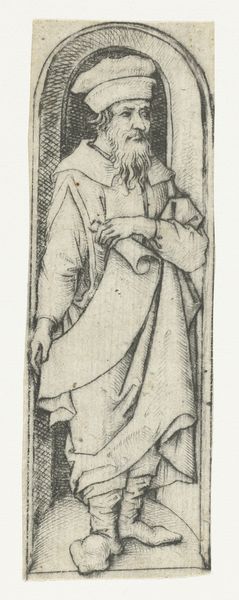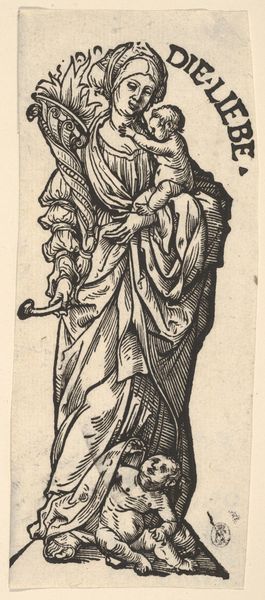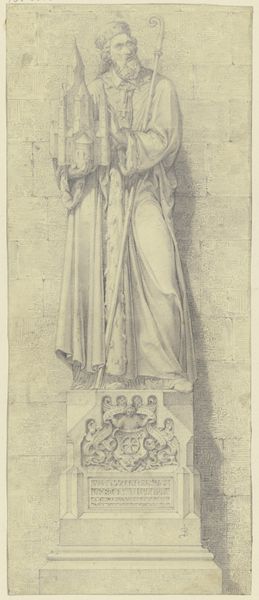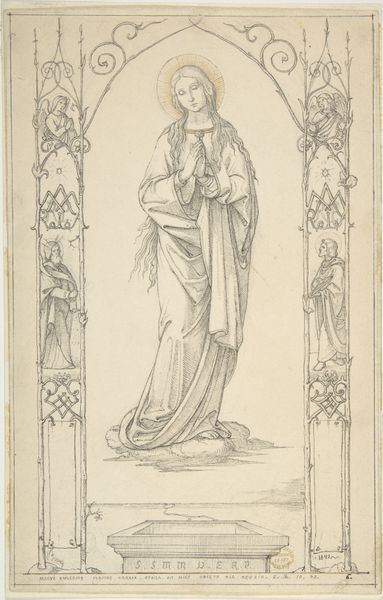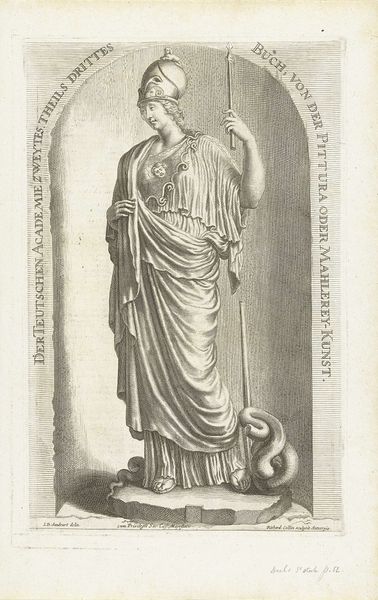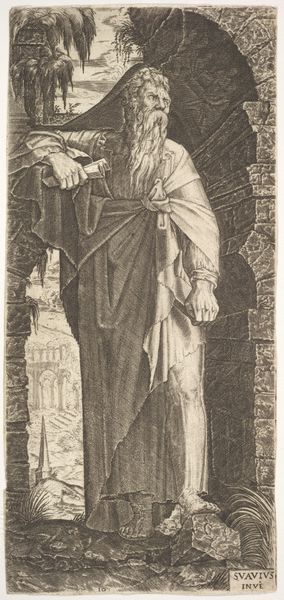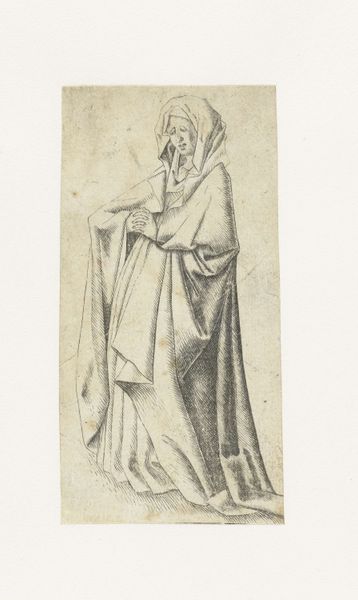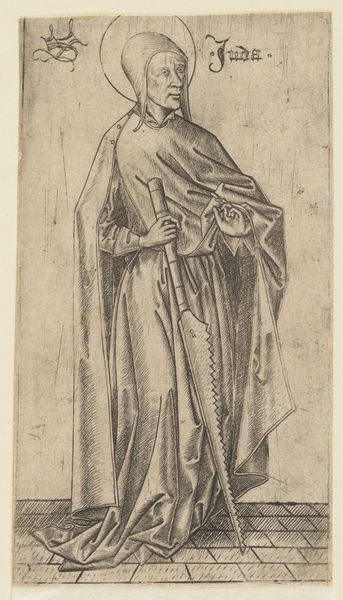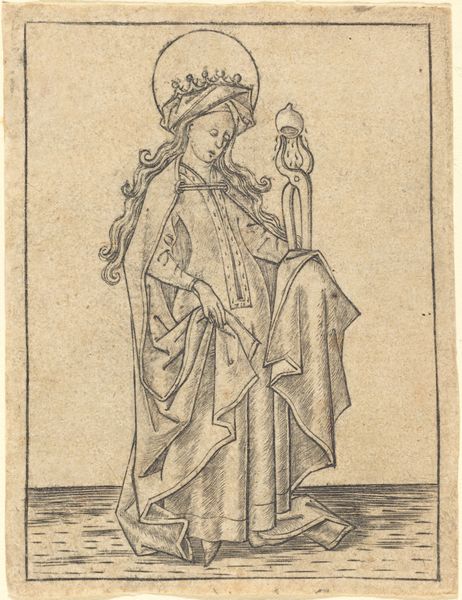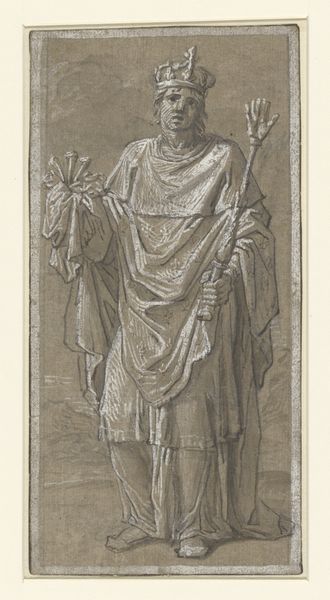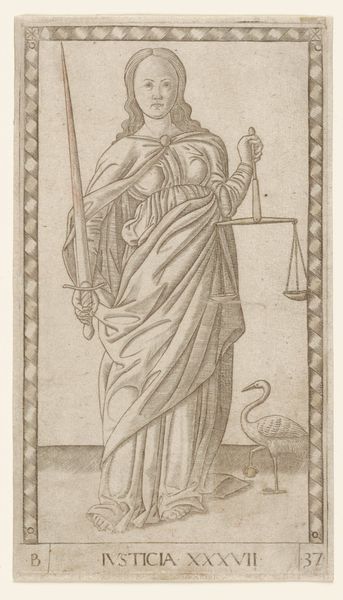
print, engraving
#
portrait
#
medieval
# print
#
figuration
#
form
#
cross
#
pen-ink sketch
#
line
#
history-painting
#
northern-renaissance
#
engraving
Dimensions: height 121 mm, width 40 mm
Copyright: Rijks Museum: Open Domain
Editor: This print, "Heilige Barbara (kleine versie)" made around 1485-1490 by the Meester van het Amsterdamse Kabinet, depicts a delicate figure rendered in engraving. I'm immediately drawn to the contrast between the saint's gentle, almost melancholic expression, and the solid, architectural tower beside her. What significance does this juxtaposition hold? Curator: It's a powerful contrast, isn't it? Barbara, as a saint, represents resilience in the face of confinement and persecution. Consider the historical context: late 15th century, a period of significant shifts in religious and political power. The tower, a symbol of her imprisonment and ultimately her martyrdom, also speaks to patriarchal structures that sought to contain female agency and belief. The palm frond she holds signifies her triumph over death, her enduring faith. How does understanding Barbara as a figure resisting oppressive forces change your perception of the work? Editor: It reframes the sadness I initially saw. Knowing the tower symbolizes oppression makes her serene defiance more striking. The small format of the print, then, almost amplifies the impact of her resistance—it’s a pocket-sized act of rebellion, widely disseminable. Curator: Exactly! And think about the act of printing itself. The medium allowed for the reproduction and circulation of images, spreading Barbara's story to a wider audience. The 'pen-ink sketch' aesthetic also humanizes Barbara, underscoring a more intimate, vulnerable perspective, thereby establishing a more meaningful dialogue with the viewer. Editor: I hadn’t considered the subversive potential of printmaking at that time. It adds another layer of complexity to Barbara's story, empowering it to transcend its immediate historical context. Curator: Indeed. By exploring the artwork's intersectional elements of religion, gender, and history, we begin to see art's capacity to reflect and shape societal norms. It encourages us to analyze artworks from the past using methodologies and intersectional understandings relevant in contemporary contexts. Editor: I definitely see this print in a completely new light now! Looking at art this way really highlights its resonance with contemporary ideas.
Comments
No comments
Be the first to comment and join the conversation on the ultimate creative platform.
